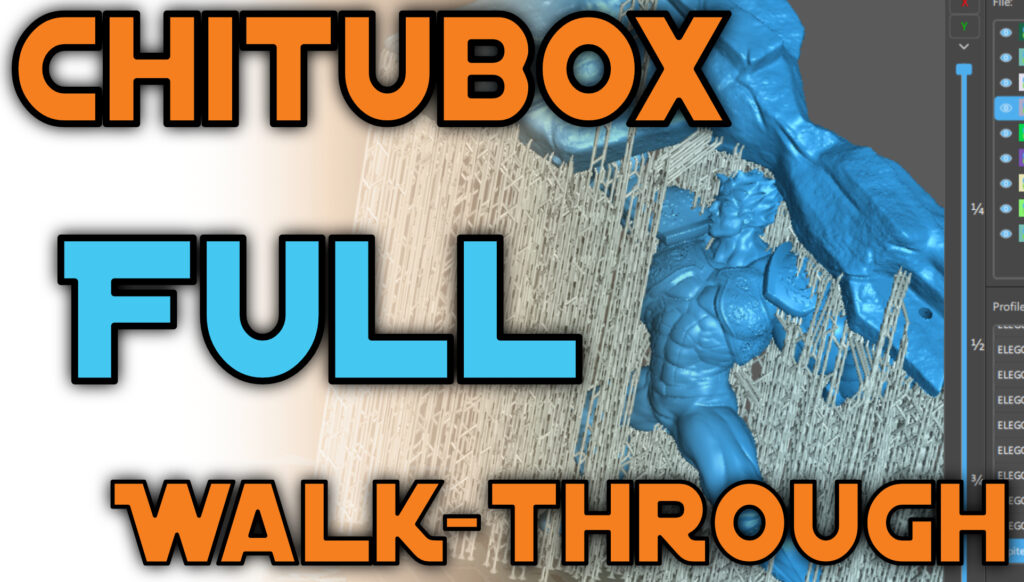3D Printing a 15-Foot Dragon – Part 3 Printing
Transcript
Hello everybody and welcome to another video. Today is the third instalment of this miniseries, where I undertake the challenge of 3D printing a 15-foot dragon. In the last video, we took the concept art and turned this into a 3d printable model, from which could start the printing process.
At the time of starting this project, I had just gotten the CR30 which I had pre-ordered during the Kickstarter project, so after doing some initial tests I believed I was ready to begin printing. I therefore took my STL files and loaded these up into the slicer to begin testing my prints. From the beginning there were changes to be made to the models since there were certain areas which were printing incorrectly. After thickening up the wall and double-checking them in Cura to get rid of any artifacts, as I was able to proceed to the next stage.
Now by the time I had received this machine we had reached the warmest period of the year and with multiple machines running at the time I had to contend with fairly high temperatures along with much higher humidity level. The average temperature in my apartment was around 5 to 8 degrees warmer than outside, and that was with a poorly functioning air conditioner running at mid-power. The print bed adhesion was severely compromised as a result, not to mention that the filament I had purchased came in two different batches. Despite ordering the exact same filament, both batches required completely different temperatures. So with the sweltering heat I did my best to get the prints going for this machine, however things would prove far difficult than expected.
After a couple of successful prints, I began to notice 2 things. The first is that the prints weren’t sticking to the bed, and the second was that the prints were getting worse the more I printed with the machine. After several failed prints dislodged themselves from the print bed, I eventually figured out that I needed to wipe down the surface of the machine in isopropyl alcohol. The second batch of filament required a minimal hot end temperature of 210 along with a slightly higher build plate temperature. Although I had finally gotten the prints to stick down, they were still getting worse. After having tried changing the retractions, ooze amounts, printing heights, and temperature just to mention a few, nothing seemed to work, so I tried re-loading a previous file that had successfully printed. When that print also failed to complete I knew that the issue was mechanical in nature and after a month and a half of troubleshooting the answer finally came during an awful print failure. The extruder pressure was clearly too tight, since it had pushed it through the Bowden tube itself. I must admit, this is the first time I’ve ever seen this happen. After replacing the Bowden tube, it was here that I discovered what was causing the lack of material to extrude. The tip of the Bowden tube has burned and deformed due to heat creep. I ordered myself some Capricorn tubing and replaced it with this higher quality option. With this completed, I was finally able to extrude material once again and there was a remarkable improvement on the print quality. This meant that the higher temperatures of the new filament had caused excessive amounts of heat to creep up the hot end. With the 3d prints finally completing, I began printing the rest of the plates for the dragon.
Prior to beginning the full sized print of the head, I began fine-tuning my measurements in Blender with small scale resin prints of these parts. This allowed me to go through many alliterations at a quick pace prior to committing to the full print. This saved me several weeks of work, since I clearly had to make changes to my tolerances before proceeding to the full size. With these changes completed, I was now ready to start printing the final piece.
Throughout the printing process, I ran into constant issues with the time-lapse footage, but this was nothing in comparison to when it came to printing the full sized head. You see this portion was a 5-day print which included the jaw, top portion of the skull and the connector. I’m sure you guys can guess which part had an issue. If you guessed the top of the skull, then you would be correct, since the cable to the hot end got caught along the frame and caused the machine to start releasing random strings of filament. After this, I zip tied the cable to prevent this from happening a second time and attempted to restart the print where it left off. This is where I discovered the that machine itself seems to have a procedure in place to move the Z axis prior to starting any print, which in this case was what I wanted to avoid. In the end, I solved this issue by starting the print where it left off and manually aligning the print onto the bed while it started extruding filament. I believe this only worked because the head was already so heavy that it had enough weight to stay in place during the print. Although I did end up with a significant offset, the end result would still work once it was filled in.
With all the portions printed, it was now time to begin finishing and assembling the pieces prior to the painting process. But that will be a story for another day. I hope you guys enjoyed the journey so far, and I hope to see you guys soon. Thank you and take care.

